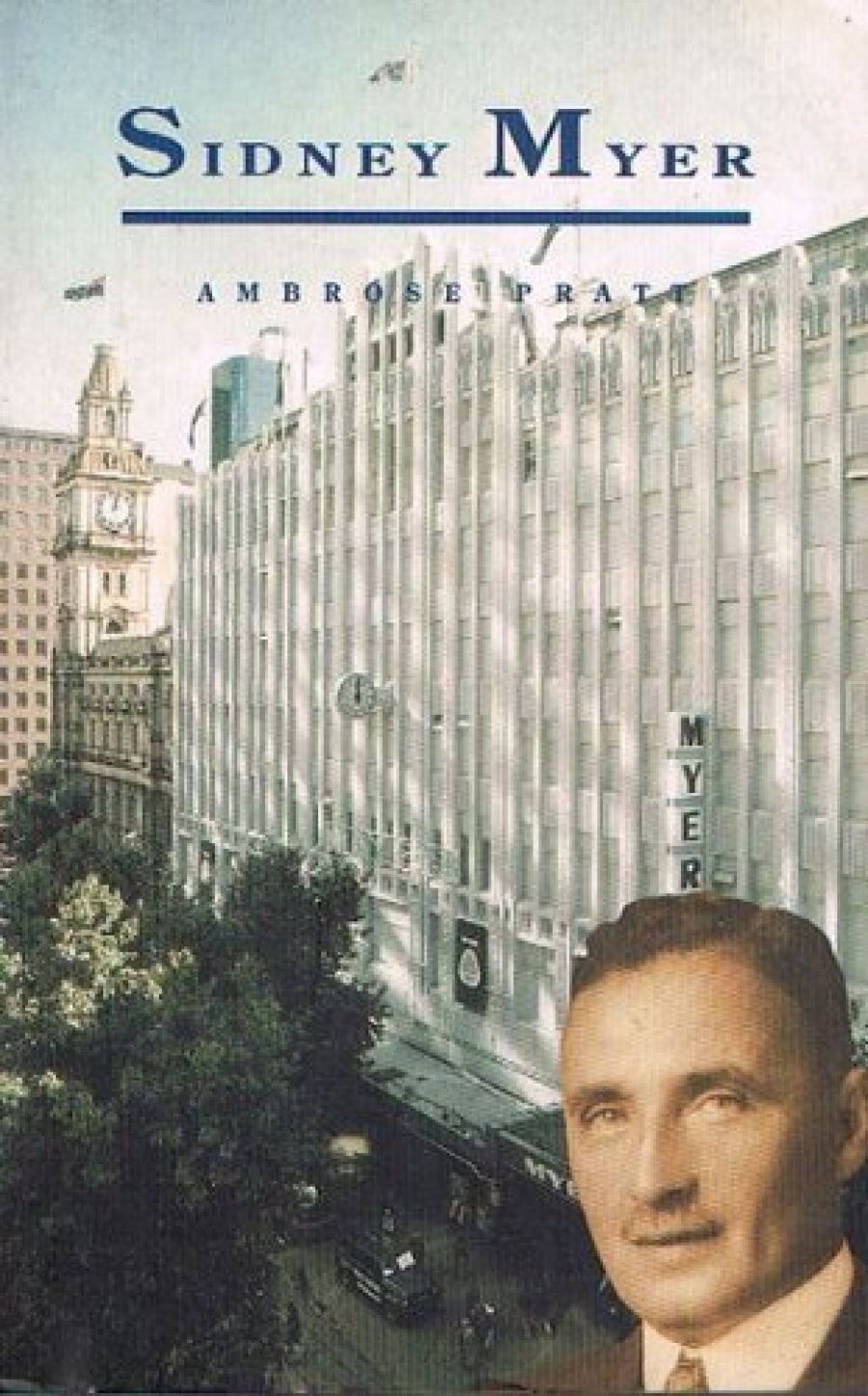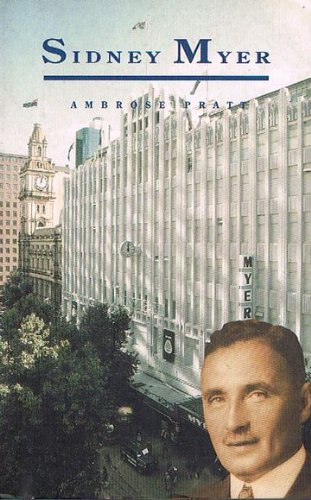
- Free Article: No
- Contents Category: Biography
- Review Article: Yes
- Article Title: A Conquering Merchant
- Online Only: No
- Custom Highlight Text: This biography was commissioned by the late Sidney Myer’s trustees shortly after his death in 1934 and completed within a year or so. The author, Ambrose Pratt, was a personal friend of Sidney Myer as well as being a prominent man of letters and the biographer of David Syme.
- Book 1 Title: Sidney Myer: A biography
- Book 1 Biblio: Melbourne Quartet, $12.50, 180 pp
- Book 1 Cover Small (400 x 600):

Now, almost fifty years later, the biography has been issued, edited jointly by A.H. Tolley, a former Managing Director of Myers and Neilma Sidney, Sidney Myer’s elder daughter, an accomplished writer and the author of several novels and collections of short stories.
The release of this biography is well justified if only for the early chapters which describe Sidney Myer’s Russian-Jewish background and his arrival in Australia in
1899. He had acquired a smattering of English on board ship and it was good enough to enable him to take a cab to his brother’s residence in Drummond Street, Carlton, for almost half a century the refuge for Russian and Polish Jewish immigrants.
With some experience of business in Kritchev and Vitebak where he helped his mother, a woman of strong character and considerable commercial ability, Sidney Myer joined with his brother Elcon in his drapery business and soon began to prosper. Ambrose Pratt writes:
As a retail commercial traveller and salesman Sidney Myer had no peer on the roads. He retained all Elcon’s customers and he made so many additional trading connections that the new soon outnumbered the old.
It is interesting to note that from the beginning of the century onwards, slowly but surely, just as science was becoming wedded to industry, making possible a tremendous increase in the production of goods, a number of talented, far-sighted Russian-Jewish immigrants were responsible for the change from the small specialised retailing stores to the great mass consumer emporiums. This happened in the USA, England, Germany, France, and here in Australia. For example in 1884 in England, Michael Marks, the founder of Marks and Spencer, hired a stall in Leeds Market because he had been struck by an original idea; he planned to sell items of universal need, at only one price – a penny. The idea proved popular; in the years that followed he hired space in other markets and opened ‘Penny Bazaars’ which subsequently led to the establishment of the Marks and Spencer Emporiums.
Sidney Myer was no less original. He launched great sales. After, he acquired the old fashioned Craig Williamson concern in 1908 he promptly held ‘a hurricane sale of the entire stock at cut prices’.
When he bought an old business in Bourke Street, ‘he completely altered the whole interior of the store and converted each old-fashioned department into a modern showroom where the goods could not only be seen but handled and examined by intending customers,’ writes Ambrose Pratt.
As this biography suggests Sidney Myer was a complex personality, highly successful yet in some indefinable way filled with a sense of frustration. There is still more to be said about him. Ambrose Pratt’s biography provides a useful cornerstone for a fuller study.


Comments powered by CComment